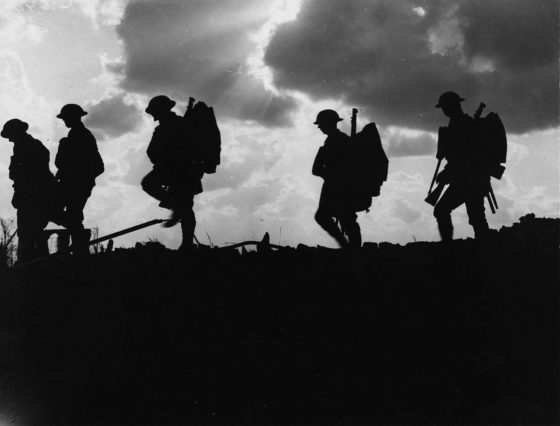
“The grandson of John Jellicoe, the British admiral in command at Jutland, has released a short film about the battle.”
NEXT MONTH MARKS the 100th anniversary of the First World War’s greatest naval engagement: The Battle of Jutland.
Britain’s National Museum of the Royal Navy and the Imperial War Museums have joined forces to commemorate the centenary of two-day, 250-ship clash with an ambitious exposition entitled “36 Hours — Jutland: The Battle that Won the War.”
The exhibit, which opens on May 19 at the Portsmouth Historic Dockyard, will feature images, artifacts and documents from what’s remembered as the largest dreadnaught showdown in history.

As part of the commemorations, the grandson of Sir John Jellicoe, the British admiral in command at Jutland, has released a short film about the battle.
Nick Jellicoe, author of the book Jutland: The Unfinished Battle, produced the immersive 24-minute CGI presentation. The Swiss-based advertising executive narrates the video, which provides a thoroughly watchable blow-by-blow account of the action. Click below to see it for yourself.
(Published with permission)
Background to the Battle
Jutland began on the afternoon of May 31, 1916, when ships of the British and German navies collided in the North Sea 80 miles west of the Danish coast.
Two days earlier, Berlin sortied 99 vessels under the command of admirals Reinhard Scheer and Franz Hipper from the North Sea port of Wilhelmshaven in hopes of ending the British blockade that had been strangling the Fatherland since 1914.

Learning that the enemy’s High Seas Fleet was on the prowl, admirals Jellicoe and David Beatty set out to intercept and destroy the German armada with two squadrons totalling 151 ships.
At 3 p.m. on May 31, warships from both navies blundered into each other and began trading salvoes.
Two hundred and fifty vessels and 100,000 men fought in the ensuing battle. When it was over, the British had lost more than 6,000 sailors and 14 warships, including three of its prized battlecruisers. German casualties were lighter: more than 2,500 dead, 1 battlecruiser destroyed and 10 other ships sunk.
Although Berlin claimed victory at Jutland, Britain’s naval supremacy was maintained. Hard-pressed to replace its losses, Germany’s surface fleet would avoid risking further action at sea for the remainder of the war. The Kaiser’s navy would instead try to break the Allies through the renewal of unrestricted submarine warfare. The policy would eventually draw the United States into the conflict leading to Germany’s eventual downfall in 1918.

Jutland 100
Follow MilitaryHistoryNow.com for more on the Jutland 100 commemoration. We’ll be providing a sneak peek of the Portsmouth Historic Dockyard exhibit in advance of its May 19 opening. MHN contributor, author and WW1 historian Scott Addington will be checking it out for us. Stay tuned!










1 thought on “Jutland Remembered – 36 Hours that Changed the Course of WW1 (Video)”